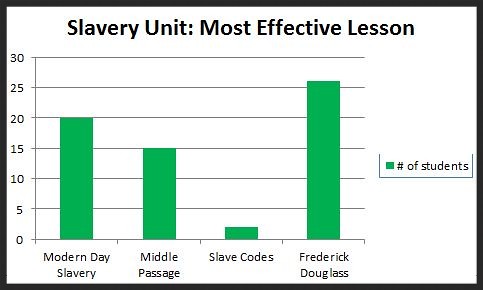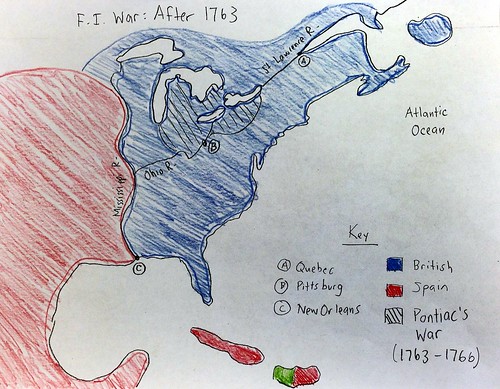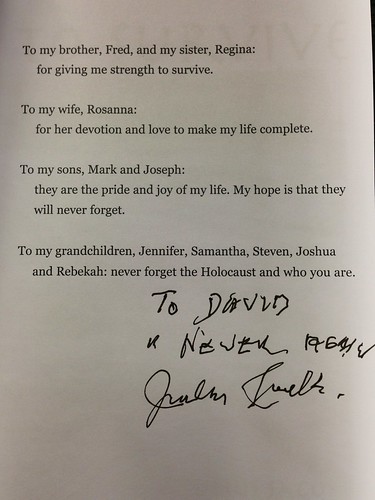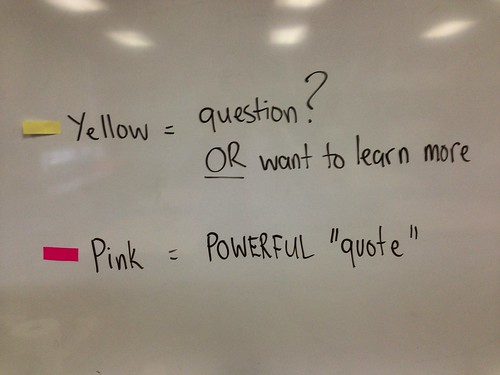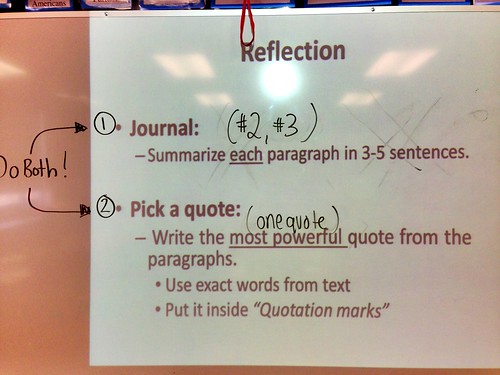Yay…PSSA Week…might as well finish watching our movie.
However, this also seemed like an opportunity to have students continue their work creating and answering their own questions.
Rather than fall back on the ol’ low-ball “write 10 facts from the movie” routine, I instead asked students to write down 10 questions about the movie over the course of four days. I think this task is easier said than done, because students have to simultaneously listen and watch to get information. I reminded students to be as specific as possible to avoid questions like, “What was that guy talking about during that thing?”
So far so good after a few days. Engagement during class discussion seems to be higher in general. Although for the most part, there are only a few students that drive discussion by volunteering to share their questions, there have been a lot more students volunteering to answer questions. If nothing else, my students can’t stonewall me when I ask if anyone has questions.
So in solidarity with my students, I have some questions:
- How much time do we spend collecting information to create questions vs. answering questions?
- Should students only develop their own questions on their own, or should they work together to do it? Or both?
- Who should spend more time answering the questions? Me? Their peers? Do I just keep throwing them back in until they figure it out on their own?
- What about student questions that never get answered? What about AMAZING student questions that never get answered?
I don’t know the answers. I don’t think there are clear answers. But these are my thoughts so far:
- At the moment I’m all fired up about student-generated questions, but it stands to reason that eventually getting answers to at least some of the questions is probably important too.
- Creating a flexible structure is key.
- Of course, the chief enemy is time.
- Hooray for PLNs! Some awesome feedback from a connection on Edmodo directed me to a strategy I’d never heard of called Question Formulation Technique. It ties together a lot of ideas that were loosely bouncing around in my head. Although I feel like it’s a too late for steps one and two this time around, I can still easily incorporate steps three through six.
Step One: Create a prompt
The most effective prompts for this activity are statements that are focused clearly enough so that there is a direct link to the purpose of the lesson and are neutral enough so that students feel free to respond to the prompt. Many teachers use prompts that begin with stems such as “Your role/task is to…” or “You want to / A group wants to.” A prompt could also be a description of a class project.
Step Two: Students generate questions
In groups, give students a fixed amount of time (5-10 minutes) to generate a list of questions, adhering to these rules:
1) Write down the questions exactly as they are said
2) Do not stop to discuss or answer the questions
3) Write down as many questions as you can
4) Statements should be rephrased as questions.
Step three: Students identify open and closed questions
Ask students to look at their lists and put an “O” by all of the open-ended questions (questions with many possible answers) and a “C” by questions that elicit one answer (a “yes/no” question or a question with a factual answer). Then, have students change one of their open questions into a closed question and one closed question into an open question.
Step four: Students prioritize questions
Have groups select 3 questions from their list. It could be the three questions they find most interesting or important or the three questions that they think need to be addressed first.
Step five: Groups share questions
When groups present their questions, ask them to share why they selected these three. The questions that the class generates can be used as the focus of a class discussion, a writing assignment, a research project, or as a tool to help you plan future lessons.
Step six: Reflections
Give students the opportunity to reflect on this process by writing in a journal and/or through a brief discussion.
*This six-step summary is available for download at http://bit.ly/1hgmeHf
So here’s my checklist for the rest of the unit:
- Spend some time in the textbook. We actually haven’t done that yet this unit. I also want to try out a new open-ended study guide format.
- Take a day or two to regroup and reassess our KWL list. What do the students know now? Which of their questions have they answered? What questions do they have left?
- Complete steps three, four and five from QFT.
- Maybe give another day or two in the computer lab to let students do research to find more answers. I swear it feels like such a guessing game to figure out the best time to go to the computer lab. What I wouldn’t give for a 1-1 laptop classroom…
- Develop an assessment plan to close out the unit.
- Teacher-generated questions. What key questions do I want students to answer to ensure we address essential content? I am thinking of using a counter argument format. For example, “Mr. Walp says that the Native Americans were not important during the French and Indian War. Prove him wrong!”
- Student-generated questions. Let students select a few questions they created AND answered during the unit. This should be a mix of closed and open questions. The most interesting part for me is that this will result in completely individualized tests, but it shouldn’t be any more challenging to grade than my current format which is almost exclusively based on essay responses at this point.
- Mandatory reflection component.
- What did students like/not like about creating their own questions?
- What was the most important question they had, that did not get answered? I could answer them back on their reflection.
- Suggestions for improvement.
Go to Part 3
Comments and feedback welcome!

